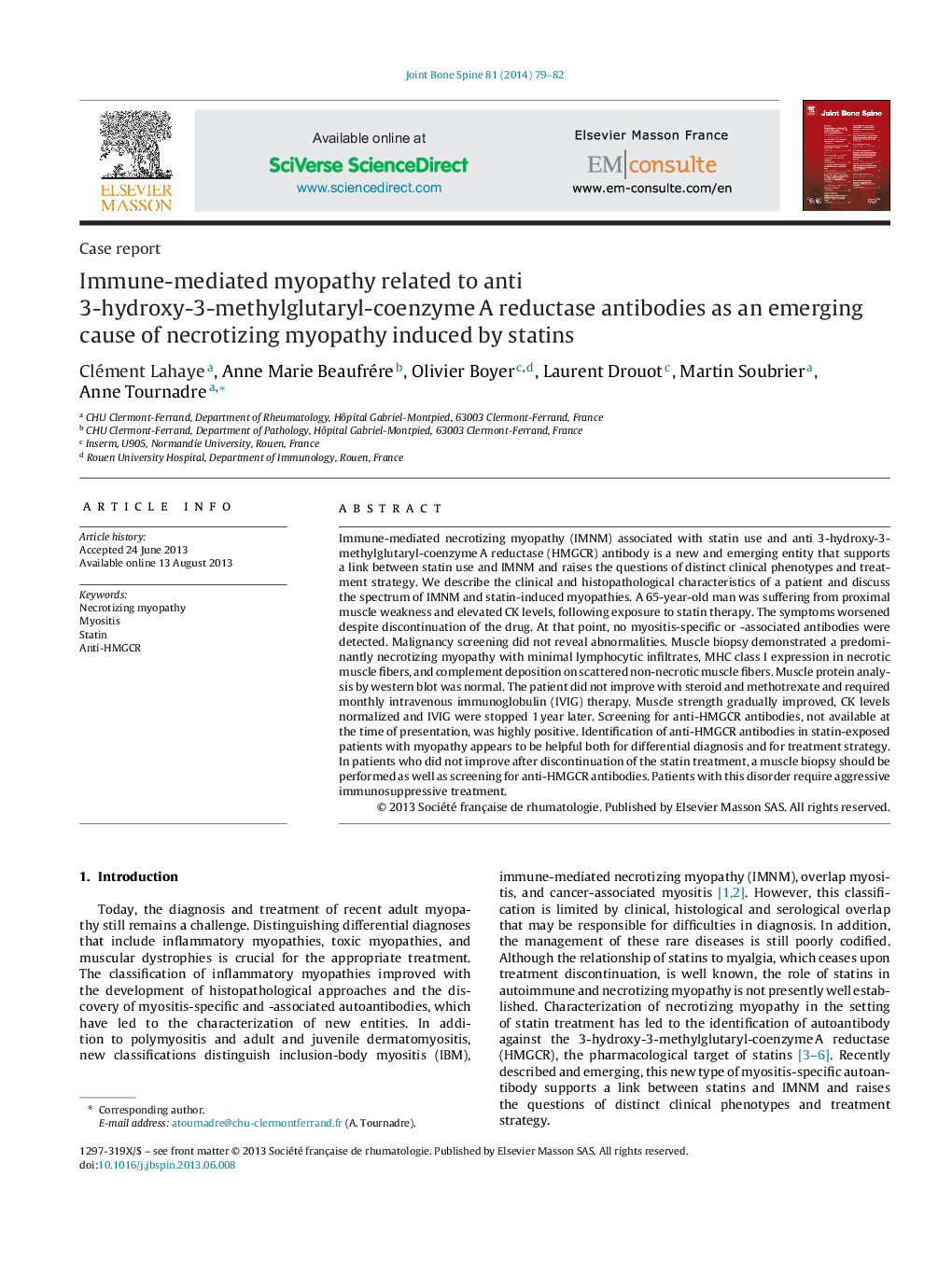| Article ID | Journal | Published Year | Pages | File Type |
|---|---|---|---|---|
| 6119046 | Joint Bone Spine | 2014 | 4 Pages |
Abstract
Immune-mediated necrotizing myopathy (IMNM) associated with statin use and anti 3-hydroxy-3-methylglutaryl-coenzyme A reductase (HMGCR) antibody is a new and emerging entity that supports a link between statin use and IMNM and raises the questions of distinct clinical phenotypes and treatment strategy. We describe the clinical and histopathological characteristics of a patient and discuss the spectrum of IMNM and statin-induced myopathies. A 65-year-old man was suffering from proximal muscle weakness and elevated CK levels, following exposure to statin therapy. The symptoms worsened despite discontinuation of the drug. At that point, no myositis-specific or -associated antibodies were detected. Malignancy screening did not reveal abnormalities. Muscle biopsy demonstrated a predominantly necrotizing myopathy with minimal lymphocytic infiltrates, MHC class I expression in necrotic muscle fibers, and complement deposition on scattered non-necrotic muscle fibers. Muscle protein analysis by western blot was normal. The patient did not improve with steroid and methotrexate and required monthly intravenous immunoglobulin (IVIG) therapy. Muscle strength gradually improved, CK levels normalized and IVIG were stopped 1 year later. Screening for anti-HMGCR antibodies, not available at the time of presentation, was highly positive. Identification of anti-HMGCR antibodies in statin-exposed patients with myopathy appears to be helpful both for differential diagnosis and for treatment strategy. In patients who did not improve after discontinuation of the statin treatment, a muscle biopsy should be performed as well as screening for anti-HMGCR antibodies. Patients with this disorder require aggressive immunosuppressive treatment.
Related Topics
Health Sciences
Medicine and Dentistry
Immunology, Allergology and Rheumatology
Authors
Clément Lahaye, Anne Marie Beaufrére, Olivier Boyer, Laurent Drouot, Martin Soubrier, Anne Tournadre,
